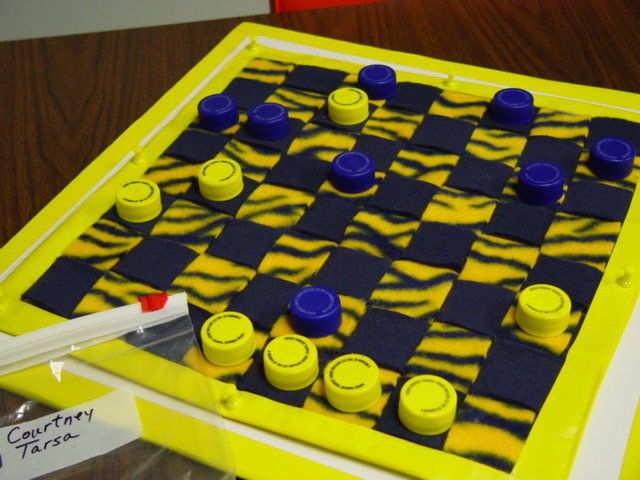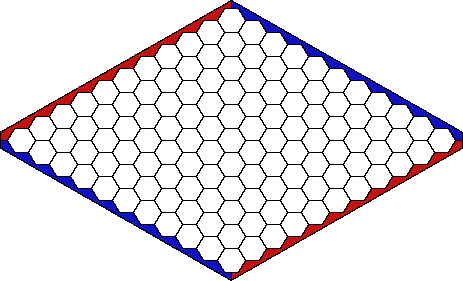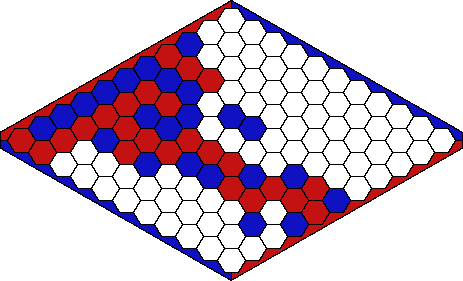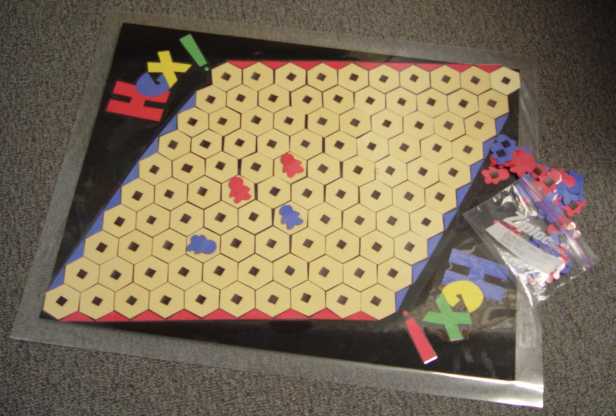|
|
|
||||||||||||||||||||||||||||||||||||||||||||||||||||||||||||||||||||||||
|
|
- In the example position, let us assume that it is RED's turn to move. Then RED could choose to move A1-A4, that is, move the piece in the bottom left corner three fields up. Or move D4-D3, that is, move the fourth red piece one field back. Note that RED can move its piece on field H5 only backwards.
- In the example position if, instead, it were BLUE's turn, then he/she could choose to move C7-C4, or choose to move B5-B6. Note that BLUE can move its piece on field H6 only backwards.
|
|
|
||||||||||||||||||||||||||||||
|
|
|
|
|
||||||||||||||||||||||||||||||
|
|



